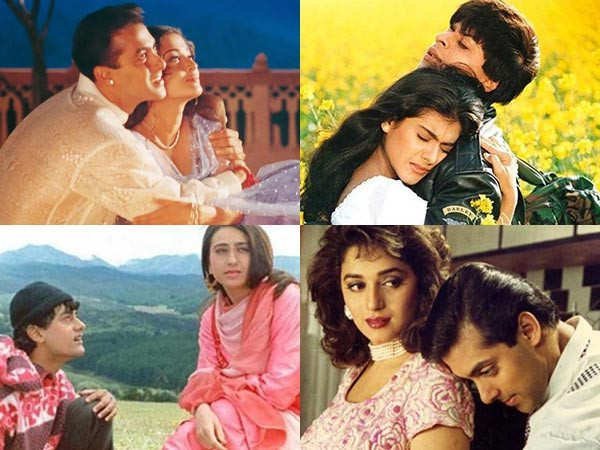The Golden Age of Indian Cinema: A Retrospective
The Golden Age of Indian Cinema, spanning from the late 1940s to the 1960s, is widely regarded as a period of unparalleled creativity and innovation in Indian filmmaking. This era saw the emergence of iconic films, legendary actors, and visionary directors who collectively shaped the foundation of modern Indian cinema. This retrospective delves into the defining characteristics, significant milestones, and lasting impact of the Golden Age on Indian film history.
The Dawn of the Golden Age
Post-Independence Optimism
The late 1940s marked the dawn of the Golden Age of Indian Cinema, coinciding with India’s independence from British colonial rule in 1947. This period of newfound optimism and nationalistic fervor provided fertile ground for filmmakers to explore themes of freedom, identity, and social justice. The liberation of the country ignited a sense of creative freedom, inspiring filmmakers to tell stories that resonated with the collective aspirations of a newly independent nation.

Pioneering Filmmakers
Visionary directors such as Satyajit Ray, Bimal Roy, Guru Dutt, and Raj Kapoor emerged as key figures during this era. Their unique storytelling styles, coupled with a deep understanding of Indian society and culture, led to the creation of films that were both artistically profound and commercially successful.
Iconic Films and Their Impact
A New Wave of Storytelling
Pather Panchali (1955): Directed by Satyajit Ray, Pather Panchali is often hailed as a masterpiece of Indian cinema. The film, which is the first part of the Apu Trilogy, presents a poignant portrayal of rural life in Bengal. Its international acclaim brought Indian cinema to the global stage and established Ray as a cinematic genius.
Mother India (1957): Directed by Mehboob Khan, Mother India is a seminal work that depicts the struggles of a poor village woman. The film’s strong social message and Nargis’ powerful performance resonated deeply with audiences, making it one of the most iconic films in Indian cinema history.
Mughal-E-Azam (1960): K. Asif’s Mughal-E-Azam is a grand epic that showcases the opulence and grandeur of Mughal India. The film’s lavish sets, elaborate costumes, and memorable performances by Dilip Kumar, Madhubala, and Prithviraj Kapoor set a new benchmark for Indian cinema in terms of production values.
Themes and Innovations
Social Realism: Films like Do Bigha Zamin (1953) by Bimal Roy and Neecha Nagar (1946) by Chetan Anand tackled pressing social issues such as poverty, landlessness, and exploitation. These films employed a neorealistic approach, drawing inspiration from Italian neorealism, to present an unflinching look at the lives of the marginalized.
Romantic Dramas: Romantic dramas flourished during this period, with films like Awaara (1951) and Shree 420 (1955) directed by Raj Kapoor. These films combined romance with social commentary, using melodrama and music to create timeless stories that continue to resonate with audiences.
Legendary Actors and Their Contributions
The Trinity of Indian Cinema
Dilip Kumar: Known as the ‘Tragedy King,’ Dilip Kumar’s nuanced performances in films like Devdas (1955) and Madhumati (1958) left an indelible mark on Indian cinema. His ability to convey deep emotional pain and his dedication to his craft made him one of the greatest actors of his time.
Raj Kapoor: Raj Kapoor, often referred to as the ‘Showman of Indian Cinema,’ was not only an accomplished actor but also a visionary filmmaker. His films such as Awaara and Mera Naam Joker (1970) are celebrated for their blend of entertainment and social message, as well as their innovative use of music and visual storytelling.
Dev Anand: Dev Anand, with his charming screen presence and charismatic style, became a beloved figure in Indian cinema. His roles in films like Guide (1965) and Jewel Thief (1967) showcased his versatility and established him as a leading star of the Golden Age.
Iconic Actresses
Nargis: Nargis’ performances in films like Mother India and Barsaat (1949) earned her critical acclaim and a lasting legacy as one of Indian cinema’s greatest actresses. Her on-screen chemistry with Raj Kapoor and her ability to portray complex characters made her a standout star of the era.
Madhubala: Madhubala’s beauty and talent captivated audiences in films such as Mughal-E-Azam and Chalti Ka Naam Gaadi (1958). Her tragic early death only added to her legendary status, and she remains an iconic figure in Indian film history.
The Music of the Golden Age
Melodic Masterpieces
Music played a crucial role in the films of the Golden Age, with composers like S.D. Burman, Naushad, and Shankar-Jaikishan creating timeless melodies that continue to be cherished. Songs from this era, rendered by legendary singers like Lata Mangeshkar, Kishore Kumar, and Mohammed Rafi, became an integral part of Indian culture.
Influential Soundtracks:
- Barsaat (1949) – Shankar-Jaikishan
- Baiju Bawra (1952) – Naushad
- Pyaasa (1957) – S.D. Burman
Musical Innovations
The integration of songs into the narrative, often to express the inner emotions of characters, became a defining feature of Bollywood. This innovative use of music not only enhanced the storytelling but also created a unique cinematic experience that distinguished Indian films from those of other countries.
The Decline and Legacy of the Golden Age
Transition to a New Era
By the late 1960s, Indian cinema began to transition towards more commercial and formulaic productions. The rise of the masala film, characterized by its mix of action, romance, comedy, and drama, marked the end of the Golden Age. However, the influence of this era continued to be felt in the decades that followed.
Lasting Impact
The Golden Age of Indian Cinema left an indelible mark on the film industry, setting high standards for storytelling, acting, and technical excellence. The films and filmmakers of this era continue to inspire contemporary artists and filmmakers, ensuring that the legacy of the Golden Age endures.
Conclusion
The Golden Age of Indian Cinema was a transformative period that saw the creation of some of the most memorable and impactful films in the history of Indian cinema. The pioneering efforts of filmmakers, actors, and musicians during this time laid the foundation for the rich and diverse cinematic landscape that India enjoys today. As we look back on this golden era, we celebrate the timeless classics that continue to enchant audiences and the artistic achievements that have shaped the course of Indian film history.



